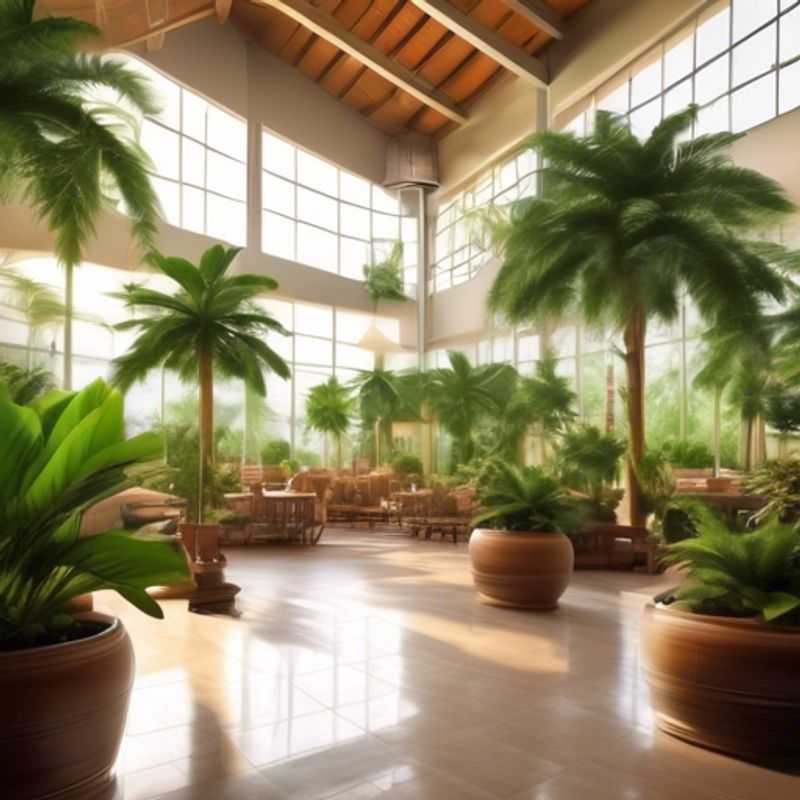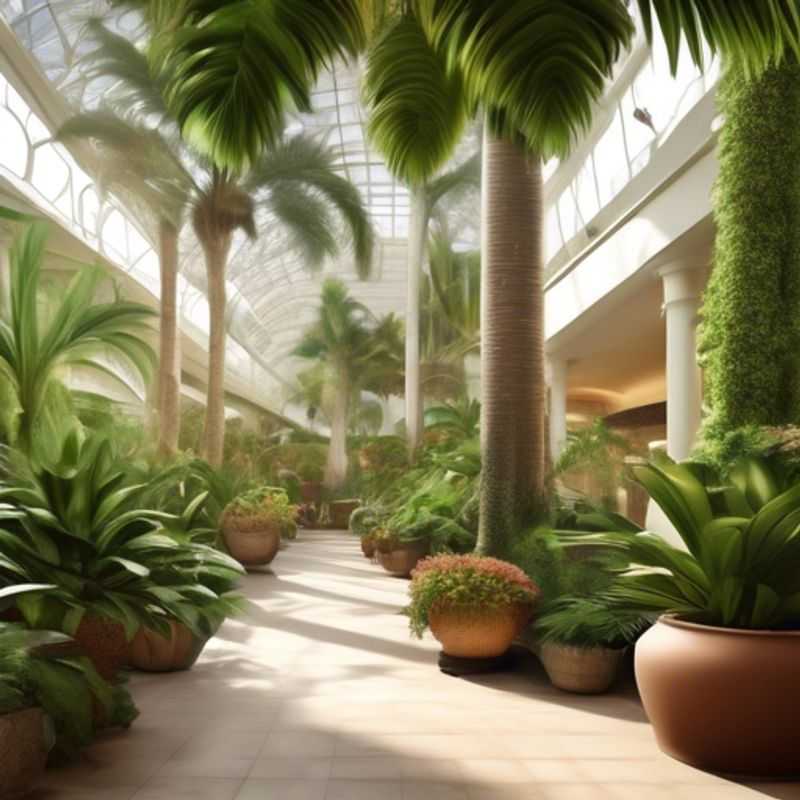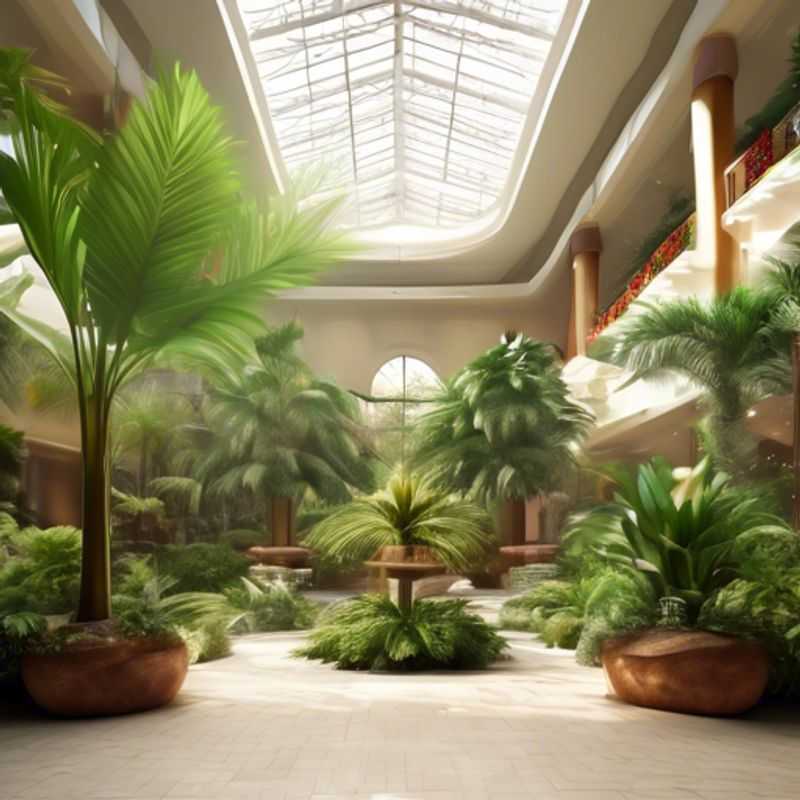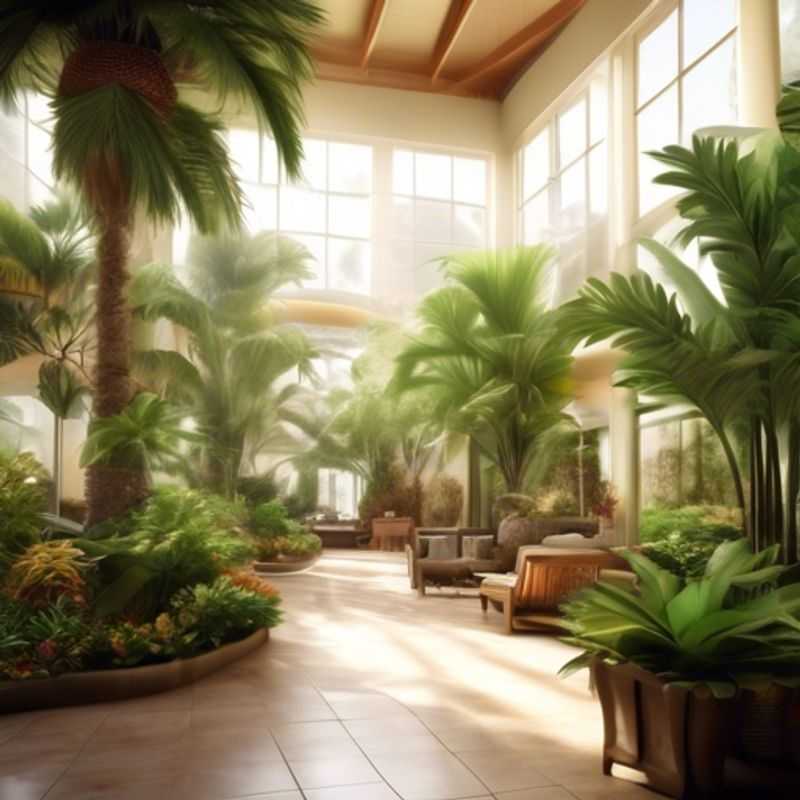Top Things to Know Before Buying Large Indoor Plants and Trees

Top Things to Know Before Buying Large Indoor Plants and Trees: Size, Lighting, Watering, Container, Weight, Maintenance, and Special Instructions
Bringing the outdoors in with large indoor plants and trees is a wonderful way to enhance your home's ambiance and create a sense of serenity. However, before you embark on this green journey, it's crucial to consider a few essential factors to ensure a successful and enjoyable experience. Let's dive into the top things to know before welcoming a majestic indoor plant or tree into your abode.
Consider the size and growth potential of the plant or tree. Don't underestimate the space requirements! Some plants can grow significantly larger than you might anticipate. Measure your space carefully and research the mature size of your chosen plant or tree.
Ensure the plant or tree will thrive in your homes lighting conditions. Plants are like individuals; they have their preferences. Some flourish in bright sunlight, while others thrive in indirect light. Understand the lighting needs of your chosen species and select a location in your home that aligns with its preferences.
Research the watering and humidity requirements for the specific species.

Planting for the Future: Sizing Up Your Garden's Potential
When planning your garden, it's crucial to consider the size and growth potential of the plants or trees you choose. This is especially important when selecting trees as they can significantly impact your property over time. If you're considering a large tree, it's essential to factor in its mature height and spread. You'll need to ensure there's enough space for it to grow without encroaching on power lines, buildings, or other structures. Additionally, consider the tree's root system, which can also grow quite large and could potentially damage nearby infrastructure.
It's essential to understand the growth rate of your chosen plants, as this will dictate how quickly they reach their mature size. Fast-growing plants might seem appealing for immediate impact, but they could require more frequent pruning and maintenance. Slow-growing plants provide a more gradual change, but you'll need to be patient to see their full effect. By considering the size and growth potential of your plants, you can create a beautiful and well-maintained landscape that will bring you joy for years to come.

Light Check: How to Ensure Your Plant Thrives in Your Home
Understanding the lighting needs of plants is crucial for their survival and flourishing indoors. Plants rely on light for photosynthesis, the process by which they convert sunlight into energy. When choosing plants for your home, consider their light requirements: low, medium, or high light.
Low-light plants tolerate shaded areas and can thrive with minimal direct sunlight. Medium-light plants prefer bright, indirect light, while high-light plants need several hours of direct sunlight daily.
To determine the light levels in your home, consider the direction of windows, the amount of time sunlight shines through them, and the presence of obstacles like trees or buildings blocking light.
For a more precise assessment, consider using a light meter, available online or at garden centers. This device measures the amount of light available, helping you choose the right plants for your home's specific conditions.

Watering and Humidity: Unlocking the Secrets of Your Plant's Thriving
Understanding the watering and humidity needs of your plant is crucial for its health and longevity. You can start by researching the specific species you're interested in. A simple online search can provide you with valuable information. Pay attention to the plant's natural habitat; this will give you clues about its ideal growing conditions. For instance, a plant originating from a dry desert environment will likely have different watering requirements compared to a tropical rainforest species. Focus on key factors like soil moisture, frequency of watering, and humidity levels. You can also consult resources like gardening books or websites specializing in plant care for detailed insights. Be sure to consider your specific environment and the season when determining your plant's water needs.
Remember, research is key! While online resources provide valuable information, you may need to consult with a local nursery or gardening expert for personalized advice. This is particularly helpful when dealing with specific plant varieties or challenging growing conditions.

Prepping Your Planting Spot: Choosing the Right Container or Location
Planning your planting location or container in advance is a crucial step for successful gardening. By carefully considering the needs of your chosen plants, you can set the stage for their thriving.
Choosing a Container: Consider the size of your plant and its root system. A larger container allows for more room for growth, while a smaller pot might restrict the roots and cause stress.
Location, Location, Location: Think about the amount of sunlight your plants need. Most plants thrive in at least 6 hours of direct sunlight per day. Consider the wind exposure and access to water sources.
Soil Selection: The type of soil is crucial. Ensure that the soil is well-draining and provides proper aeration. You can purchase pre-mixed potting soil or amend your existing soil with compost and organic matter.
Drainage: Make sure your chosen container or location has sufficient drainage to prevent waterlogging, which can damage your plants. Use pots with drainage holes and consider adding a layer of gravel or rocks at the bottom for better drainage.
Additional Considerations: If you plan on planting in a raised bed or container, consider adding additional layers of materials like landscape fabric or weed barrier to deter weed growth.

Heavy Lifting: Factor in Weight & Logistics for Big Indoor Plants
When considering the weight and transport logistics for large indoor plants, several critical factors come into play. First, the weight of the plant itself, including the pot and soil, must be accurately measured, as this will significantly impact the transport method and the cost of shipping.
Next, the dimensions of the plant are essential. Larger plants require more space, which can lead to higher fees for transport. Additionally, fragility is a concern; many large indoor plants are sensitive to movement and temperature changes, necessitating careful handling and possibly specialized containers.
When estimating costs, consider the following paid activities: hiring professional movers, using climate-controlled transport, and purchasing insurance for valuable plants. Each of these services can add to the overall expense but may be necessary to ensure the plant arrives in optimal condition.
Furthermore, local regulations may affect transport logistics, particularly if you're shipping plants across state lines or internationally. Ensure you check for any import/export restrictions that may apply.
In summary, when planning for the logistics of transporting large indoor plants, account for their weight, size, fragility, and the associated costs of professional services and legal requirements to ensure a smooth delivery process.

Pruning and Maintenance: A Guide to Keeping Your Plants Thriving
Pruning and maintenance are essential for the health and longevity of plants and trees. It involves removing dead, diseased, or damaged branches, shaping the plant for aesthetic purposes, and promoting healthy growth.
Pruning can be done at various times of the year depending on the plant species. Generally, it's best to prune dormant trees during the winter months when they are not actively growing. However, some plants may benefit from pruning during their growing season.
Maintenance includes regular watering, fertilizing, and pest and disease control. It's essential to provide the right amount of water to your plants, especially during dry periods. Fertilizing with appropriate nutrients can promote healthy growth and development.
Proper pruning and maintenance can enhance the beauty and longevity of your plants. It can also prevent disease spread, improve fruit production, and create a safer environment by removing hazardous branches.
Professional pruning services are often available for larger trees and complex projects. These services typically involve a site visit, assessment, and customized pruning plan.
Remember, proper research on your specific plants and trees is essential. Different species have unique pruning and maintenance requirements. Consulting with a professional arborist or horticulturist can provide valuable insights for your specific needs.

Decoding the Care Instructions: Understanding Your New Plant's Needs
When you're buying a new plant, it's crucial to pay close attention to any special care instructions provided by the seller or nursery. These instructions are designed to help your new plant thrive in its new environment and ensure its long-term health.
Watering is often the most important aspect of plant care. The instructions will likely specify the frequency and amount of water your plant needs, depending on its species and the local climate.
Light is another critical factor. Find out whether your plant prefers full sun, partial shade, or complete shade. Incorrect light exposure can lead to stunted growth or even death.
Temperature plays a role in plant well-being. Learn whether your new plant is tolerant of cold or hot temperatures, and adjust its placement accordingly.
Fertilizer requirements can vary greatly. Some plants need regular fertilization, while others thrive with minimal supplementation. Follow the provided instructions to ensure your plant receives the correct nutrients.
Pruning is often essential for maintaining the health and shape of your plant. Understand how and when to prune your plant to encourage growth and prevent disease.
Pest control is important for protecting your plant from insects and diseases. The seller or nursery may offer specific recommendations for pest prevention or treatment.
Taking the time to understand and follow the provided care instructions will significantly increase your chances of successfully growing and enjoying your new plant for years to come.
